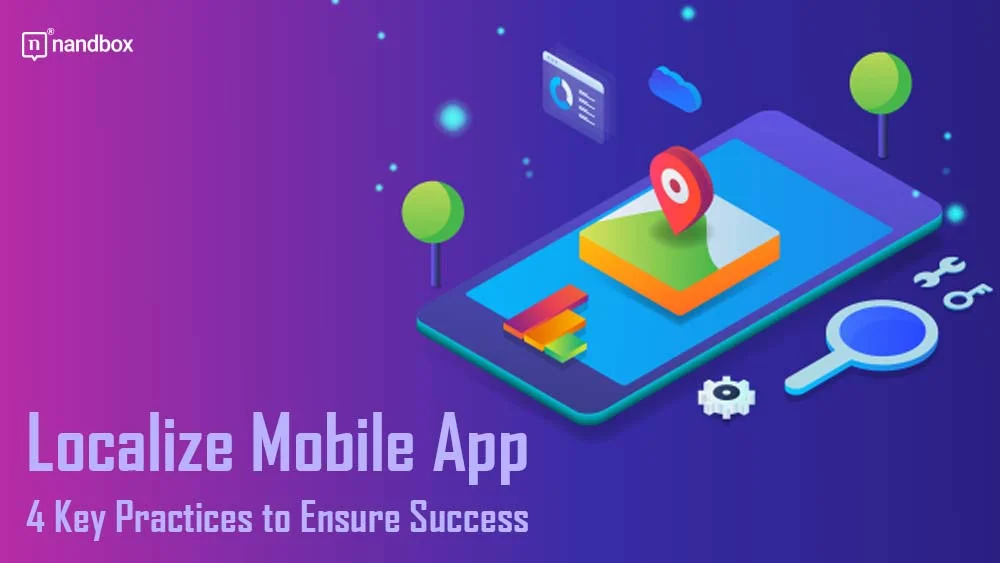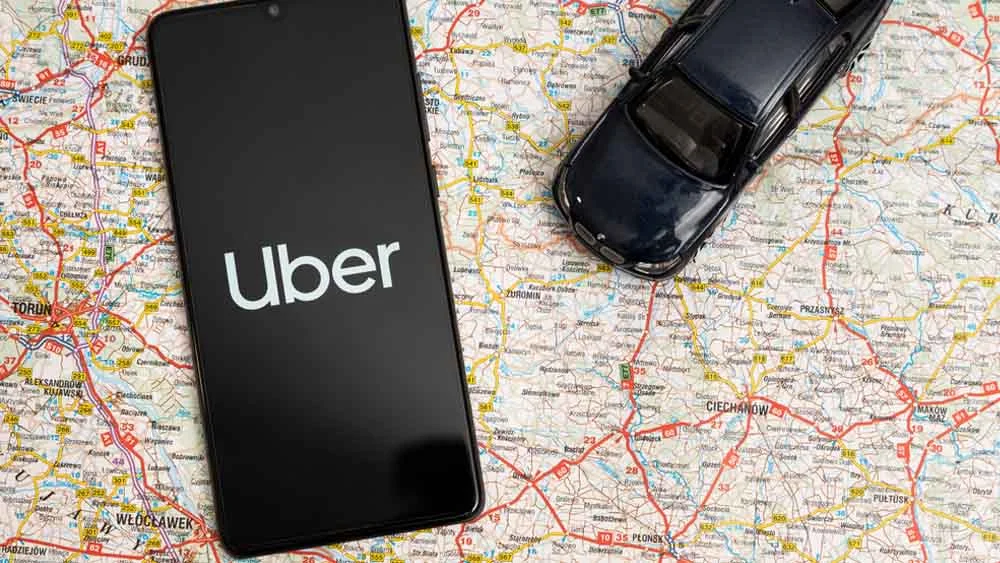The world seems so big—some think it is the biggest thing—that it has no ends. There are many places we will never get to reach or see, and there are many people we will never get to meet. However big this world seems to be, it is now more interconnected than it was in the past. This is due to many things, such as the fact that we can fly overseas and explore places we once thought were unreachable. Or the fact that we can now communicate with people from all around the world with one single tap. The more we communicate with people from different countries, cultures, and backgrounds, the more a gap is created. In this article, we will discuss one of the approaches that aim to demolish this gap. We will explore app localization and explain how you can localize your mobile app.
What Is App Localization
Mobile phones and apps are major contributors to the world’s current interconnectivity. Back in the day, communication between people from different cultures and languages was very hard and, at some point, impossible. However, as all people now have an easy way to accomplish that, communication seems to be easier at this point. That is why all app developers have been coming up with new methods and solutions to adapt their apps. Which are pretty necessary for communication and interrelationships to be established. App localization is the process of adjusting everything in your app, including all elements, components, and content. So it can be well-digested and interpreted by people from different regions and countries.
Many people from non-English-speaking countries faced many difficulties and troubles at the beginning, when apps were still emerging. That is probably because all app developers at the time were only targeting the major languages and cultures. It was the quickest way to acquire users. After the number of app users started to increase around the world over time, app developers started to find ways to make one app with the same functions available for different segments. Keep in mind that app localization is not limited to languages. It also includes introducing different features for different regions and countries. The app localization approach started to gain recognition, especially since it proved to be very effective in many ways.
How Can Localization Benefit Your Mobile App
As we now have a peek at what app localization is, let us emphasize more on how localization can benefit your mobile app. or whether localizing a mobile app really adds value. To answer these questions, let us list a few reasons why app localization is actually significant.
Expanding the Reach
The first reason that definitely came to mind is that app localization expands the app’s reach, which makes developers start targeting new potential segments. Well, that is completely right. The degree to which countries are more interested in or use mobile applications is very uneven and varies to a different extent. For instance, the mobile app market in Asia is the greatest one to ever exist because people are very dependent on apps. As we stated before, app developers tend to always release apps in English, as it is the most common language in the world. However, many Asian countries are not really familiar with any language other than their native one. So, in order to acquire new markets and segments, many apps started to support such languages to expand their reach overseas.
Enhancing User Experience
To really localize a mobile app, one must take into account the unique cultural practices and user preferences of each region. Design components, date/time formats, currency conversions, and feature adjustments may all need to be established to adapt to regional standards. Developers can more effectively connect with their potential target market by creating an effective and engaging environment for their users. Users are more likely to engage with an app that feels familiar and relevant to their daily lives. This leads to increased user satisfaction, higher engagement rates, and improved retention.
User Engagement and Retention
When it comes to user engagement and retention, app localization is essential. When a user finds an important and valuable app available in his native language, it breaks down communication barriers. And also encourages easy and seamless use. When users have no difficulty comprehending the navigation, menus, and content, they are more likely to stick around and keep using the app. In addition, users are more likely to remain engaged with localized apps over time. They provide material that is relevant and meaningful to the user’s distinct culture and environment.
Competitive Advantage
Differentiating yourself in the crowded app market is crucial. App developers who invest their effort and time into localization boost their chances of successful market penetration by making their apps accessible to more people. Apps that have been localized into many languages stand a much better chance of breaking into new markets and succeeding than those in their typical market. Users are more likely to engage with your app if it provides a unique and welcoming experience for all users. This provides the app with a great competitive advantage.
Examples of Successful App Localization
Netflix
One of the most successful app localization examples is definitely Netflix. Millions of users all over the world prefer Netflix because it excels in the area of content localization. Netflix completely customizes feeds and suggestions based on countries and regions, in terms of names, posters, and everything else. In addition, Netflix also provides users with subtitles and dubbing for all movies and TV shows. No matter what your native language is, Netflix has you covered.
Uber
Uber also understood the assignment when it came to app localization. In addition to supporting over 100 languages and serving 93 million users from all around the world, Uber took localization to a whole new level. For instance, in countries with rivers like Egypt, Uber offered a new service known as Uberboat, which allows users to request a boat and get where they want without getting stuck in traffic while also enjoying a new adventure. Uber also did the same thing in India when they offered a new service called Uber Auto. This service allowed users to request India’s most popular method of transport, which is the auto-rickshaw.
Slack
Despite being the most popular communication app and platform for organizations, when it was first released, Slack was only available in English and didn’t support any other languages. This was definitely devastating, especially since Slack included many great functions that were pretty beneficial for organizations. However, Slack went on to localize its mobile app and platform and support other languages. Slack now supports over seven main languages and has approximately ten million users around the world.
Best Practices to Localize Your Mobile App
We get it; app localization is pretty significant and truly contributes to any app’s success. However, how can one apply it properly? And what are the best practices to follow?
1. Conduct Thorough Market Research

Market research is essential before localizing your mobile app to understand the language, cultural characteristics, and differences of your target audience. You need to find out what your users care about and how to improve it by conducting thorough research. Gathering information about users’ behaviors, preferences, and perspectives is also important to gain insight into which elements and functions you would like to add to your global app and whether there are any modifications that need to be made.
2. Use Professional and Reliable Tools for Translation
For a successful localization of your mobile app, the proper translation of the content into the target audience’s language is crucial. The free and easy translation services you usually find online, such as Google Translate, have their purposes, but the translations they provide are often inaccurate. To ensure that your app’s message is conveyed effectively in other languages, it’s best to hire a professional translation service with great expertise in app localization. To further assure accuracy and cultural appropriateness, it is recommended to have native speakers evaluate the translations.
3. Consider Pseudolocalization First
Before diving into full localization, consider using pseudolocalization as a first step. Pseudolocalization is a technique that involves translating the app’s content into a fake language that mimics the target language’s structure and length. This allows developers to test the app’s layout and functionality with longer or shorter text strings, different character sets, and other language-specific features. Pseudolocalization can help identify potential issues early on and save time and resources in the long run.
4. Use Local Currencies and Payment Methods
You must take into account the various currencies and payment methods used worldwide when localizing your mobile app. Providing users with trusted and simple local payment choices helps boost user satisfaction and engagement. Find out which payment options are most often used in each market your app is aiming for. It can also help customers comprehend the pricing of your app or in-app purchases if you show costs in their native currency. To guarantee up-to-date and correct exchange rates, you may choose to use an API that converts currencies.
Final Thoughts
It is very important to think about going global and making an app that people from different languages, cultures, and backgrounds can use. However, you have to calculate each and every step of how to properly localize a mobile app. You also have to know exactly what you could offer users that is new and would really add value. By doing such things, you can ensure a great and effective localization process, which will indeed help your app achieve many successes.





